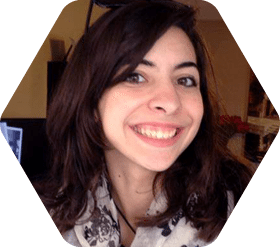From Leonardo to STOMP
Look in any arts or cultural history text and you’ll not likely find an entry for Interdisciplinary Arts, yet in the arts it’s hardly new. One need only think of the artist-scientist Leonardo, or the poet-printmaker-mystic William Blake, or the poet-painter-designer-socialist William Morris to find examples of venerated artists of the past whose interests spanned various modes of thought and expression.
More recent examples of artists whose work is interdisciplinary in nature would be (to name but a few) performance artist Marina Abramovic, social sculptor Joseph Beuys, artist-scientist-inventor Theo Jansen, musician-poet-filmmaker-graphic artist Yoko Ono, composer-choreographer-director Meredith Monk, writer-filmmaker Luis Bunuel, performance/film & installation artist Matthew Barney, light-and-space installation artist James Turrell, performance artist-musician Laurie Anderson, environmental artist Mierle Laderman Ukeles, and video artists Nam June Paik, Gary Hill and Bill Viola. The essence of IA is also realized collaboratively, as in the performance group STOMP, the artist collective Superflex, and the Critical Art Ensemble.
So why have a major in Interdisciplinary Arts?
It’s simply an exciting new way of focusing and directing an arts education here at Eckerd. Some schools refer to it as “integrated arts” or “cross-disciplinary arts.” We like “interdisciplinary arts” because Eckerd College claims a long history of encouraging interdisciplinary approaches to teaching and learning. It should be noted that increasingly, graduate programs across the country are giving new emphasis to interdisciplinary studies and majors in their curricula.
The Interdisciplinary Arts (or IA) major at Eckerd honors traditional means of integrating the arts (for example the illustration of original text). But with the advent of new materials and new media, such as video, performance art, multi-media installation, book arts and digital arts, the many possibilities for integrating the arts have been greatly expanded. The major is especially suited to those with an interest in video and film production (experimental, narrative or documentary), which are by their very nature interdisciplinary, typically utilizing the full spectrum of the arts: visual arts, theatre, music and creative writing.
A word of advice
There is absolutely nothing lacking in the traditional majors of Creative Writing, Music, Theatre, and Visual Arts! Perhaps you can best thrive within any one of these disciplines, and if you have multiple interests among the arts, you can simply explore them separately.
The IA major is only designed for highly motivated students who have a clear purpose in building and crossing bridges among the arts (and possibly to disciplines outside the arts), and who wish to explore and integrate different modes of creativity.
IA Prehistory
Although the IA major at Eckerd is relatively new (since 2006), we have long encouraged interdisciplinary approaches to the arts, and some of our very best arts students during IA’s “prehistory” have crossed those bridges in one way or another. Indeed such individuals were the very model and inspiration for IA’s existence. A few of these alumni predecessors are here mentioned:
- Taryn Sabia (’01) spent many hours in the Eckerd Dance program* while also pursuing her Visual Arts major. A visually impaired student, Taryn had long been concerned with the issue of equal access to opportunity. Her interests in body movement and visual arts was evident in her thesis exhibition (photographs, some of them printed on ceramic slabs, depicting dancers). Upon graduation Taryn earned her Masters in Art Education at Harvard, and following that she earned her Masters of Architecture at the Rhode Island School of Design. Now she now teaches at the University of South Florida in Tampa, and is co-founder of the Tampa Urban Charrette, a forum created to discuss how the design of the city of Tampa may become more sustainable.
- Stuart Hyatt’s (’97) interests at Eckerd included both art and music. As a Visual Arts major his thesis gallery exhibition was a sound installation, a veritable solar system of uniquely painted fiberglass spheres suspended from the ceiling, each embedded with its own original sound track that the listener/viewer would plug into with headphones. Stu went on from Eckerd to get his MFA in sculpture at Indiana University. Thereafter his first position of employment was Artist in Residence at the Coleman Arts Center in Sumter County Alabama, one of the poorest counties in that state. Stu drove up and down all the back roads of the county in his pickup truck, collaborating in making and recording original music with school children and gospel singers. The resulting cd, titled Clouds, was so fresh and inspiring that it made the rounds of radio stations as far away as New Jersey, and it was ultimately picked up by the American Composers Forum and issued on their Innova label. Not only that, but Stu’s original cd package design, using recycled materials, was one of five finalists for a Grammy Award in 2006! Stuart is founder and owner of Team Records, and he continues to be involved in innovative recording projects. He went on to also earn a Masters in Architecture from Ball State University, and is now a member of M12, an award-winning collaborative group of artists and designers devoted to community arts projects. M12 was represented in the U.S. Pavilion at the 13th Venice Architecture Biennale, in 2012. In 2018, with the Field Works Collective, he composed and premiered a new album with a sold-out live performance from deep inside the Cave Without a Name, near Bourne, Texas. In 2019, Stuart was honored by being named a National Geographic Explorer. And in 2020 his sound recording titled “Ultrasonic” was featured in a review in the New York Times.
- When she was a senior at Eckerd, Blaze Birge Jones (’97) collaborated with her show partner Nicole Manuel to stage a stunning performance work in the gallery for their senior thesis, transforming the gallery space into a cabaret, complete with original dance, music and costume. After graduation Blaze went to London to learn the art of trapeze, and then co-founded the Flynn Creek Circus, headquartered deep in the forests of Mendocino County, California. The circus is described as “pushing tradition to the edge,” and is dedicated not only to performance throughout northern California but also to the arts of the community, offering classes and workshops.
With these several examples of IA prototypes, it should be plain why we were inspired to create the Interdisciplinary Arts major, to give shape and identity to what has been done so well in the past here, and to raise a banner high in hopes of attracting students who are similarly innovative and inspired to creatively integrate their arts experience at Eckerd.
*Dance is not currently offered at Eckerd as an academic course, but we do have an Eckerd Dance Team.







